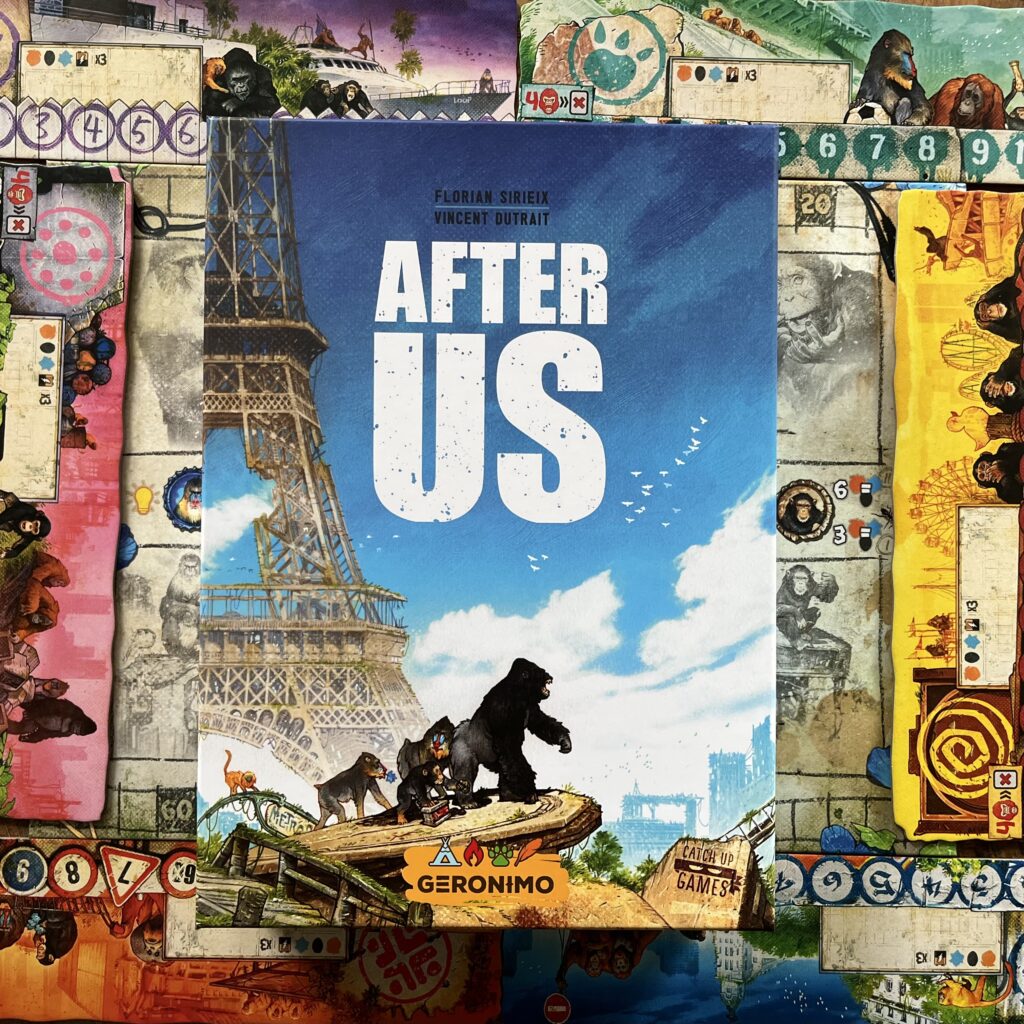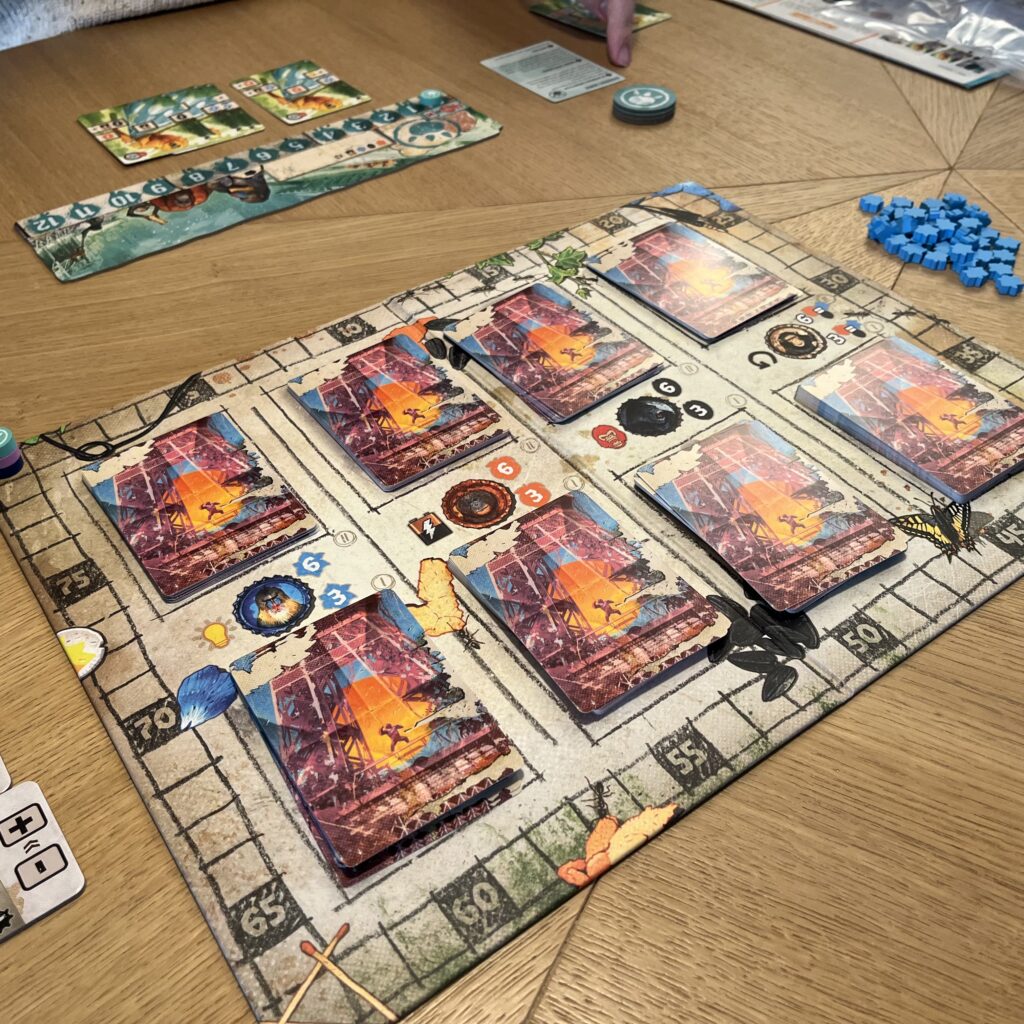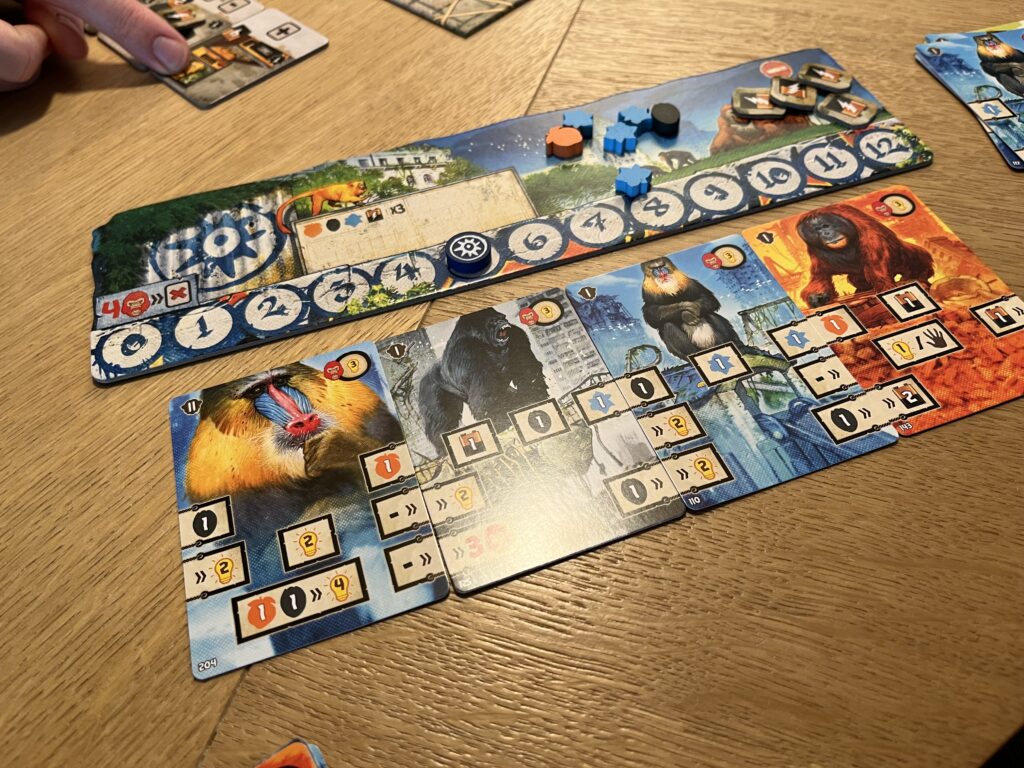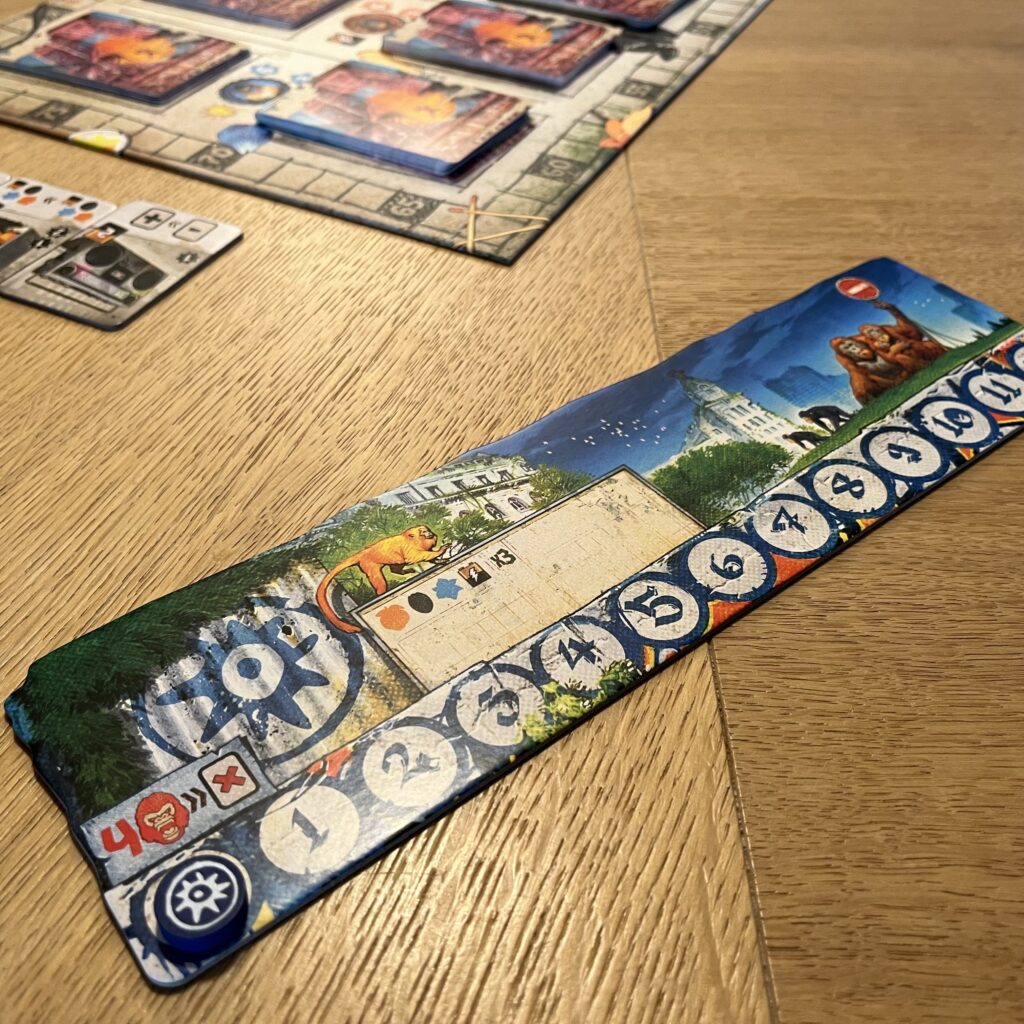In the land of the apes, King Kong is king. Land of the Apes? Travels through the Land of the Apes is a satirical and fictional travel story from 1788 in which the equally fictional doctor J.A. Schasz describes his journey through a strange place. Monkey Land tells you little, King Kong’s Skull Island may tell you more, but the Planet of the Apes film series based on Pierre Boulle’s book may tell you a bit more. In those stories, the apes take over from its distant cousin: man, after an almost apocalyptic event. In this board game, too, the apes took over After Us.

Background
In After Us, each player takes charge of a troop of different monkeys with the goal of earning the most points. Don’t expect much monkey business from your fellow players, by the way, as the game is fairly solo. Like male gorillas, players don’t interfere much with each other, so don’t expect any slinging of poop and little oe-oe-oo. Just get those bananas, nuts and batteries (that will become clear later) ready and it’s time to Bono-go!
Setup & gameplay
At the beginning of the game, place the central game board with two stacks of cards for the macaque, orangutan, gorilla and chimpanzee, respectively. Each player gets their own board, a marker to keep track of points and anger, four action chips and a stack of starting cards to form the beginning of the troop.

The draw pile of cards is your troop and each round you assemble a monkey council by drawing the top four cards from your pile. During a round you will collect items, make combos to earn points, perform actions and collect new cards. Each round consists of three phases, and the best part: all of these phases for the monkeys at the table simultaneously.
Each round consists of the following phases: 1. Assemble Monkey Council, 2. Lure Monkeys and 3. Rest phase.
While composing the monkey council, you draw four cards from the draw pile. With these cards you will form a series of actions and bonuses. Each card contains three possible rows of symbols. Each complete frame yields a possible action/bonus. After you have puzzled the four cards together, you deal with the three rows on the cards in order and get resources and can exchange resources for such things as victory points depending on the symbols on the cards.
Players will simultaneously bait monkeys and they do so not with a shadowy van and some candy canes, but with action chips and resources. With an action token, you determine which kind of monkey you can lure, but to do so you must be able to pay for the right resources. There are two levels of cards and the higher level obviously costs more resources. An action token also has a bonus that you can activate regardless of whether you lure a monkey. Incidentally, by discarding resources you can also activate the bonus of an action token from one of your neighbors. Coaxed monkeys go on top of your draw pile. During the rest phase, you discard the monkey board.


During the game players earn points and as soon as a player has enough points this race full of monkey tricks is over.
Conclusion
After Us has elements of a deck builder and tableau builder. Players try to combine interesting cards with each other. By the way, you don’t know which card and exactly buy, but each monkey has a certain focus. Incidentally, with rage collecting with the gorilla you can chase monkeys out of your deck and discard cards to clean up your deck a bit. Still, a little slinging of poop!
The intriguing thing about After Us is the innovative and surprising game mechanics in which players build a tableau each turn in the form of a monkey council and use it to puzzle together their resources and actions. They try to improve their possible council of monkeys. Little interaction, but a lot of action and all in all an exciting race.



